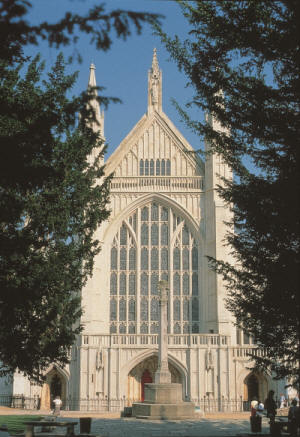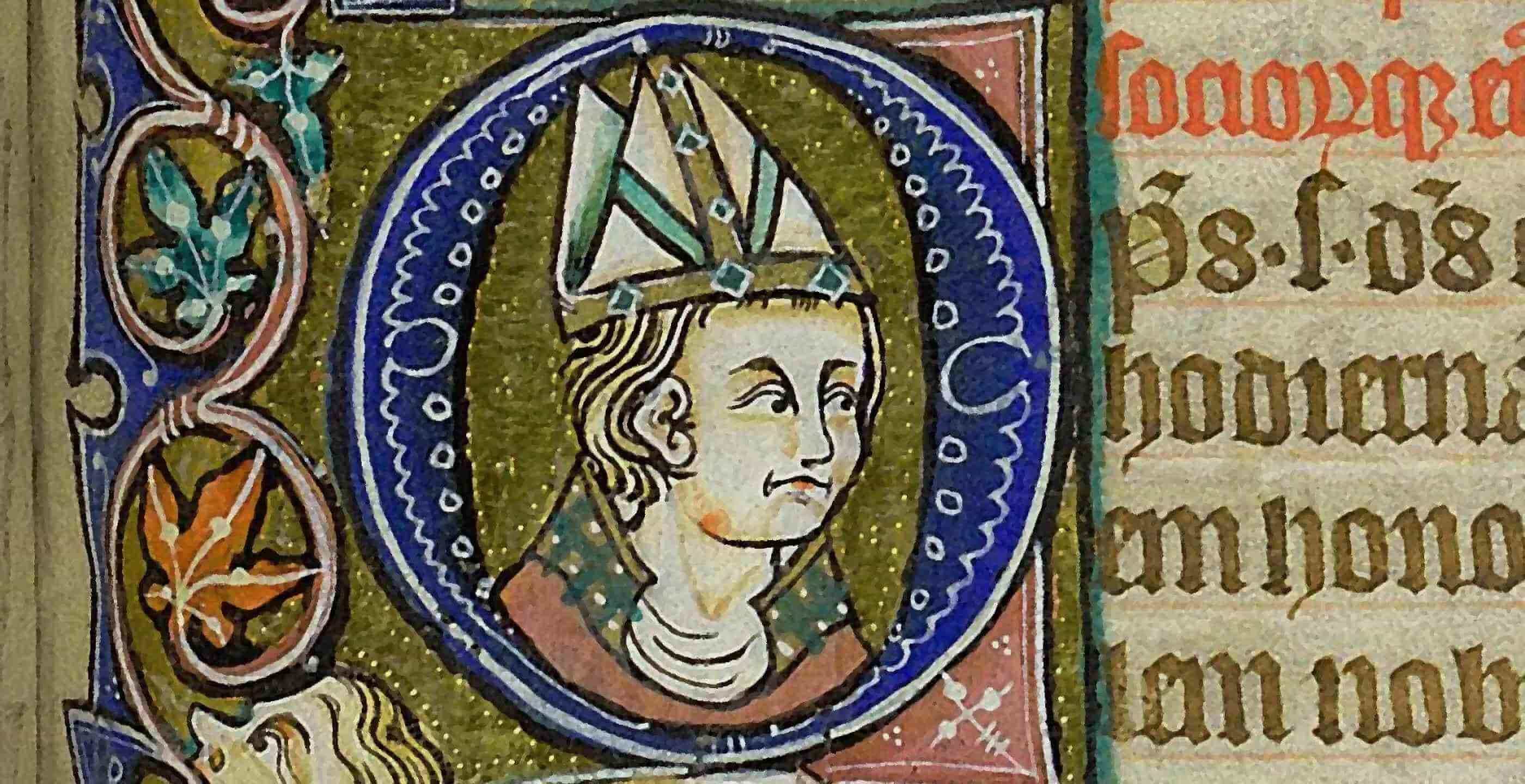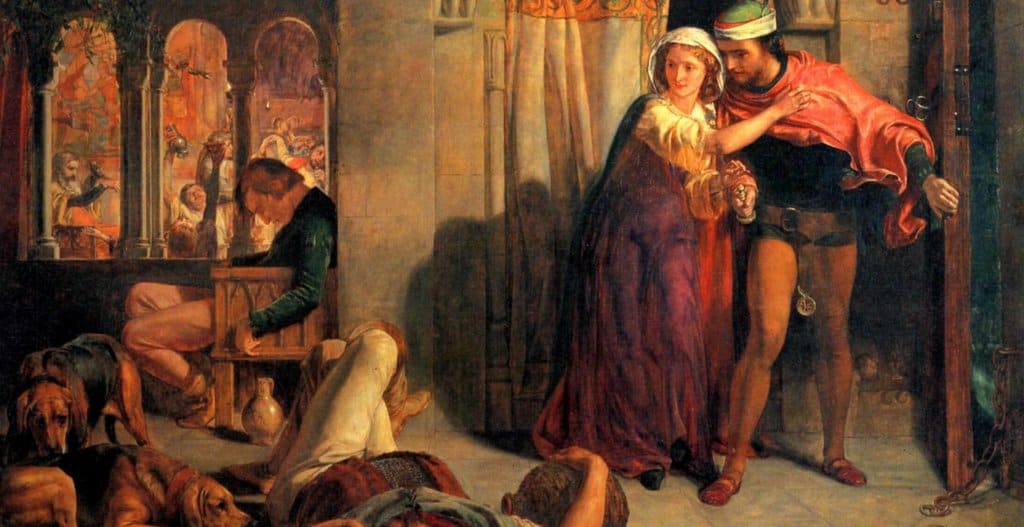A standing joke worldwide is the English preoccupation with the weather. So how did it come to pass that the English summer should be determined by a long dead Anglo-Saxon Bishop?
St Swithun’s Day (or ‘Swithin’ as he is also known) is the feast day of a ninth century Anglo-Saxon Bishop of Winchester who died in 862 AD. Swithun was born in the Kingdom of Wessex (an Anglo-Saxon Kingdom in the South-West and the precursor to the unified Kingdom of England) and educated in Winchester, the Kingdom’s capital.
 Little is definitively known about Swithun’s life although he is said to have been the spiritual adviser of Æthelwulf, King of Wessex, who donated much of his royal land to Swithun to build and restore numerous churches. Swithun has also been suggested as the tutor of Æthelwulf’s son Alfred, which would fit chronologically at least, since Alfred was born in 849 AD. Alfred (right) then went on to become the mighty ruler of Wessex and the only English monarch to date to be bestowed with the title ‘the Great’, so a good job well done by Swithun you could say!
Little is definitively known about Swithun’s life although he is said to have been the spiritual adviser of Æthelwulf, King of Wessex, who donated much of his royal land to Swithun to build and restore numerous churches. Swithun has also been suggested as the tutor of Æthelwulf’s son Alfred, which would fit chronologically at least, since Alfred was born in 849 AD. Alfred (right) then went on to become the mighty ruler of Wessex and the only English monarch to date to be bestowed with the title ‘the Great’, so a good job well done by Swithun you could say!
With his link to the town of Winchester, Swithun is unsurprisingly well remembered across the south of England and particularly in Hampshire. However, St Swithun is also honoured as far afield as Norway, where he is commemorated at Stavanger Cathedral. St Swithin’s Lane in London and St. Swithun’s quadrangle at Oxford University’s Magdalen College are also named in memory of the saint. His feast day is also familiar to fans of David Nicholl’s popular novel ‘One Day’, which has now been adapted for the big screen (with surely one of the most questionable Yorkshire accents of all time courtesy of Anne Hathaway!).
However, whilst Swithun was a popular bishop, his only known miracle during his lifetime was the repair of a basket of broken eggs, dropped by a flustered lady of his parish on unexpectedly encountering the Bishop. His enduring legend is due to events after his death on 2 July 862.
With his dying breath Swithun is said to have requested that his final resting place be outside, where his grave could easily be reached by both members of the parish and the rainfall from the heavens. Swithun’s wishes were met for over 100 years. However, in 971 when the monastic reform movement had been established and religion was once again at the forefront, Æthelwold of Winchester, the current Bishop of Winchester, and Dunstan, Archbishop of Canterbury, decreed that Swithun was to be the patron saint of the restored Cathedral at Winchester where an impressive shrine was built for him.
Swithun’s body was removed from its simple grave and interred in the new Cathedral on 15 July 971. A shrine to the Saint remains in the modern Winchester Cathedral to this day.
According to legend, forty days of terrible weather followed, suggesting St Swithun was none too happy with the new arrangements! Ever since, it has been said that the weather on 15 July supposedly determines the weather for the next forty days, as noted in the popular Elizabethan verse:
For forty days it will remain
St Swithin's day if thou be fair
For forty days will rain na mair”
 It is also possible that the legend springs from a particularly heavy rainstorm on Saint Swithun’s Day in 1315, coupled with St Swithun’s supposed posthumous miracles. One such miracle was his appearance to Queen Œlfgifa (or Emma as she is also known), mother or Edward the Confessor. This was on the night before her ‘ordeal’, a trial for her supposed adultery with Aelfwine, former Bishop of Winchester, which involved walking across hot blades at Winchester Cathedral (right). St Swithun is supposed to have told Queen Œlfgifa “I am Saint Swithun whom you have invoked; fear not, the fire shall do you no hurt.” The following day, the Queen was able to walk barefoot across the blades completely unharmed. The miraculous work of Saint Swithun, and of course, her innocence.
It is also possible that the legend springs from a particularly heavy rainstorm on Saint Swithun’s Day in 1315, coupled with St Swithun’s supposed posthumous miracles. One such miracle was his appearance to Queen Œlfgifa (or Emma as she is also known), mother or Edward the Confessor. This was on the night before her ‘ordeal’, a trial for her supposed adultery with Aelfwine, former Bishop of Winchester, which involved walking across hot blades at Winchester Cathedral (right). St Swithun is supposed to have told Queen Œlfgifa “I am Saint Swithun whom you have invoked; fear not, the fire shall do you no hurt.” The following day, the Queen was able to walk barefoot across the blades completely unharmed. The miraculous work of Saint Swithun, and of course, her innocence.
Less spectacularly, the superstition may have evolved from pagan beliefs around the changing weather of the Midsummer period. This can be explained today by the patterns of the wind currents bringing weather fronts across the British Isles, known as jet streams. When the jet stream falls to the north of Britain, high pressure systems (usually associated with clear skies and calm weather) are able to move in. In contrast, when the jet stream lies over or beneath the British Isles, arctic air and low pressure weather systems are more common and bring cloudy, rainy and windy weather. Indeed, across Europe there are Saints who are believed to exert a similar influence over the weather, such as St. Medard, St. Gervase and St. Protais in France on 8th and 19th June and St. Godelieve in Flanders on 6th July.
Whatever you choose to believe, it certainly makes for an interesting conversation whenever the weather is mentioned!





